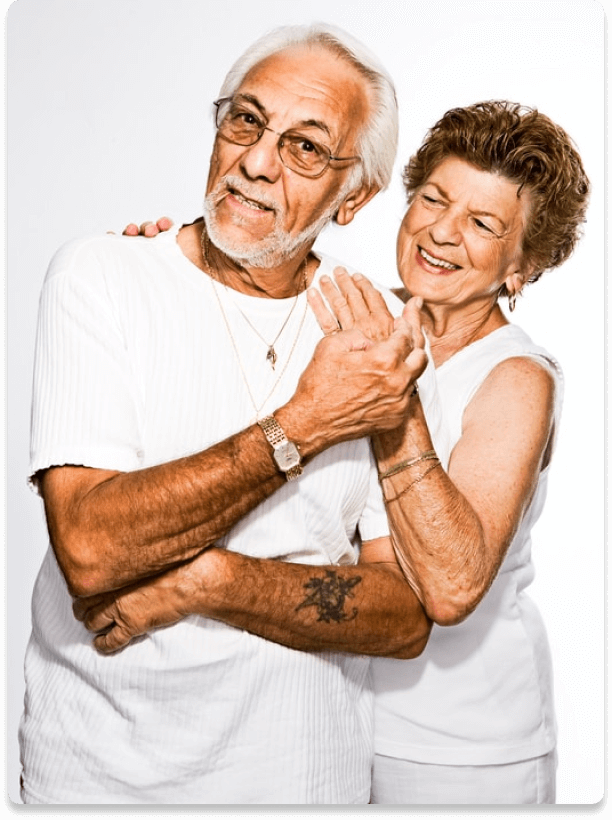5 Great Cardio Exercises For Seniors

Table of Contents
Cardiovascular exercises are important for all people, regardless of age. Engaging in regular cardio routines will improve heart function, lung capacity, boost your immune system and increase your stamina.
According to the CDC (Centers for Disease Control and Prevention), healthy seniors:
“…should do at least 150 minutes (2 hours and 30 minutes) to 300 minutes (5 hours) a week of moderate-intensity, or 75 minutes (1 hour and 15 minutes) to 150 minutes (2 hours and 30 minutes) a week of vigorous-intensity aerobic physical activity, or an equivalent combination of moderate- and vigorous-intensity aerobic activity.”
If there is a pre-existing condition that limits mobility, it is best to consult a doctor to determine what is appropriate and how many physical activities you should perform.
The good news is there are many different great cardio exercises for seniors that you can consider. Below you can find some recommendations to incorporate in your daily or weekly routine for a healthier lifestyle.
1. Walking And Jogging

If you did not exercise regularly for a long time, walking is the very first cardio exercise to consider. Most people underestimate walking as it is a really low-impact activity. This is actually one of the main advantages that can be mentioned. Walking is very easy on your joints and can build muscle tone while strengthening bones.
The best intensity level needs to be determined based on terrain and pace. Leisurely strolls are considered low-intensity. Walking at a brisk pace is considered moderate-intensity. Brisk walking on hilly terrain is vigorous.
If you are comfortable with walking and there is no discomfort even if the terrain has inclines, you can move up to jogging. This is another great weight-bearing activity that you can enjoy, but only if the pressure put on your joints is not too high. Jogging pace is usually at a speed of 5 miles per hour. Obviously, you can go slower if that is your comfort level. Just as with walking, jogging becomes vigorous when you run through incline-changing terrain.
2. Spin Classes
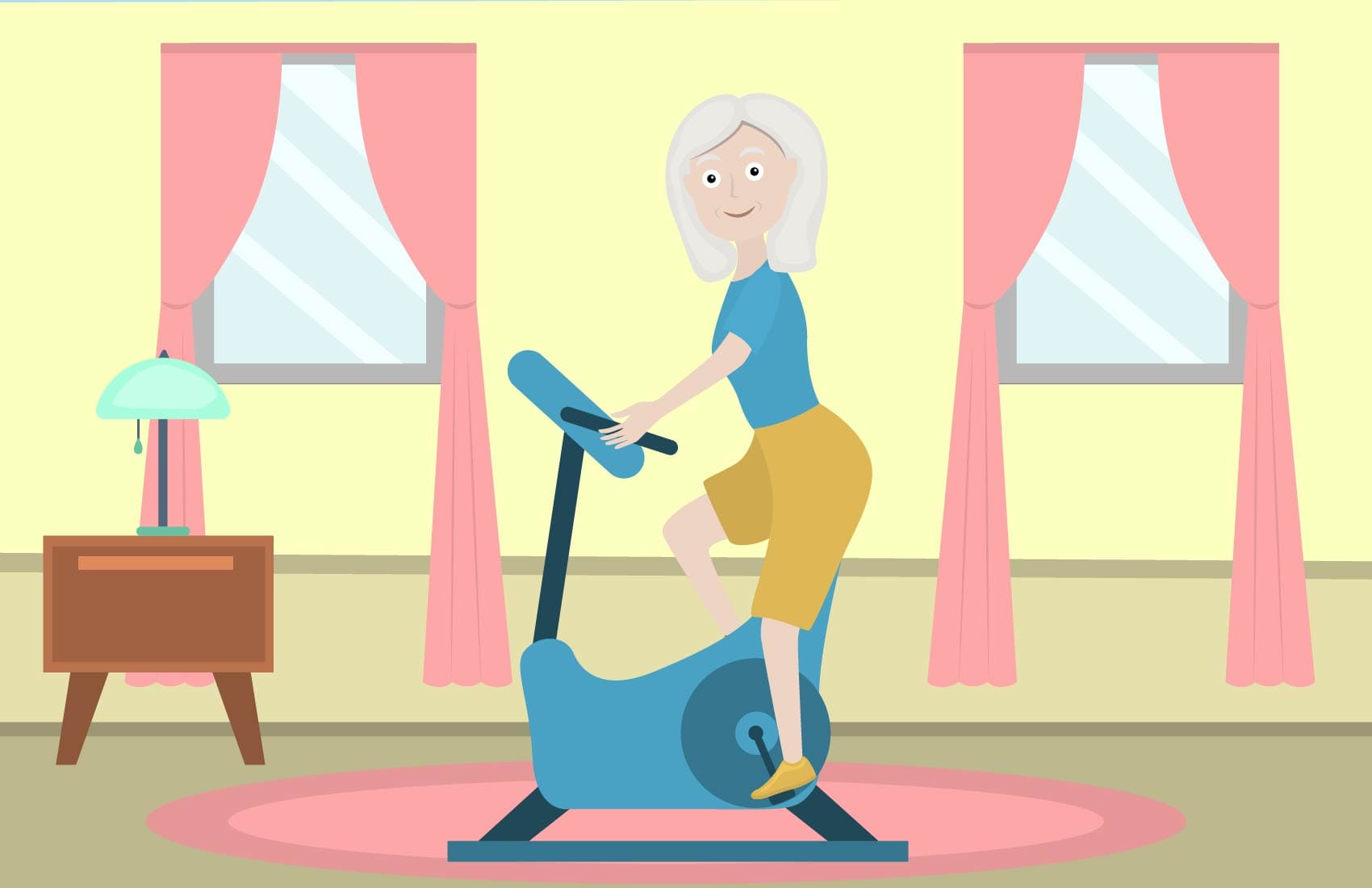
Spin classes are quickly gaining popularity among seniors. It is easy to understand why since a spin class offers a really good cardio workout and can be a lot of fun due to its social element (a spin class involves more people, usually of the same age group, allowing you to make new friends).
Although spin classes are not new, most people do not know much about them. With this in mind, it is normal to have some questions, especially as a senior that is worried about possible mobility or health problems. Cat Kom at Studio SWEAT onDemand can answer some of the most common questions you may have:
- How intense should the spin class be?
Intensity depends on your fitness base. If you have been regularly exercising for years, you surely need to have more intense sessions than someone that just now starts at 65.
- How long should the spin class be?
Based on the intensity and personal fitness level, a session can last between 15 minutes and 60 minutes.
- Do spin classes offer benefits for adults over 65?
Spin classes offer higher intensity cardio workouts and this is a great thing since they help keep the heart “younger” and healthier. Muscle atrophy is lessened and blood pressure levels are kept down. At the same time, spin classes are low impact and they can even strengthen joints as opposed to damaging them.
- Do I need to prepare for the new high-intensity workout routine?
You should go through a longer warm-up than when you were younger. Generally speaking, the older you are, the longer the necessary warm-up. Because of this, if the spin class does not include the longer warm-up, you need to warm-up on your own. Also, remember that when you go to spin classes more times per week (2 or 3), it is easier for the body to adjust to spin classes.
If you want to join a spin class, talk to the instructor first. They will offer more advice.
3. Yoga
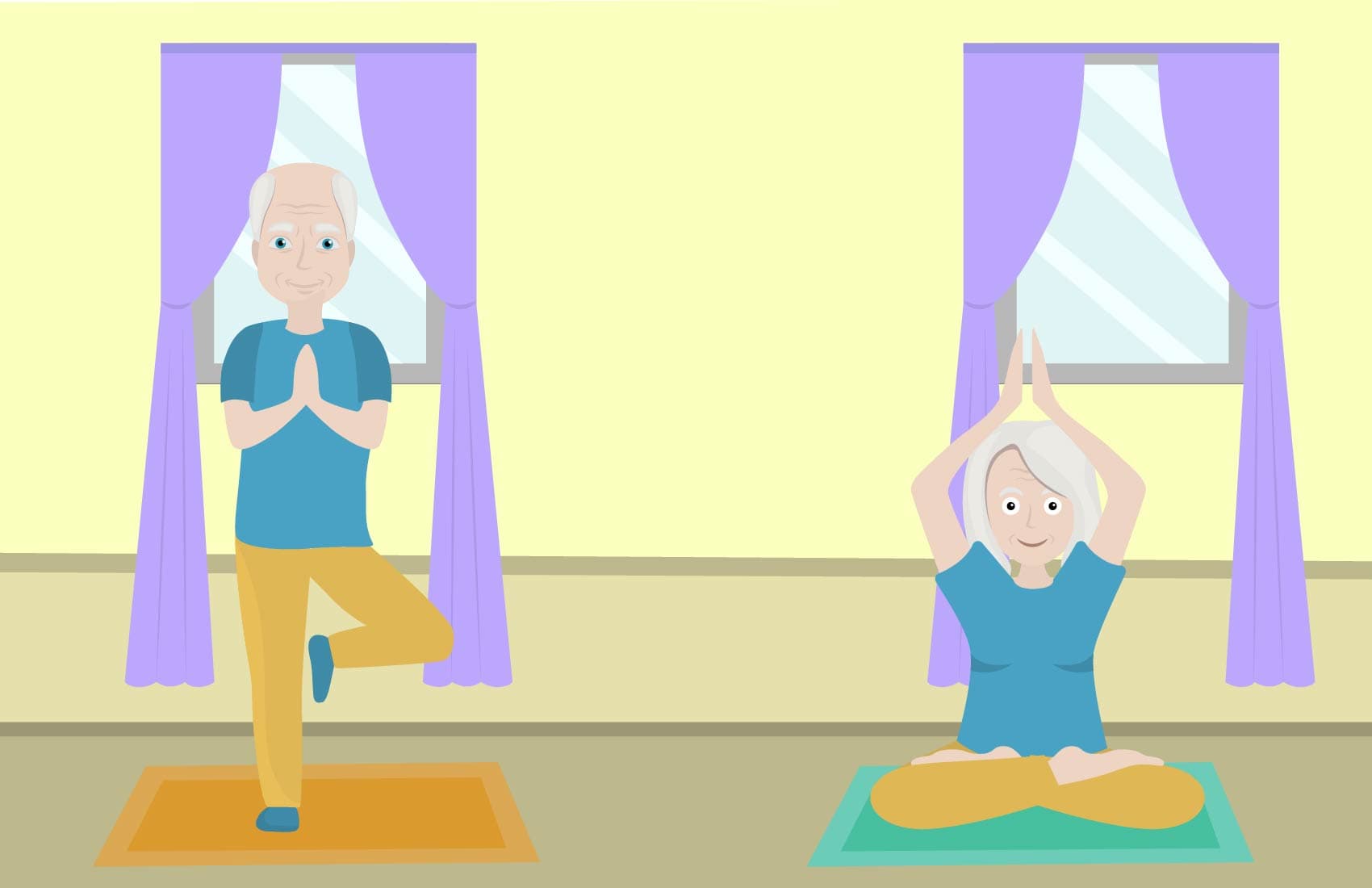
Yoga has been around for over 5,000 years and is appropriate for people of all ages and physical levels, including seniors with mobility problems. Generally, we see yoga as a stretching and muscle-toning activity. In reality, it is much more than that. Many yoga styles will raise heart rates at levels that are higher than what you would get through aerobic classes.
For seniors that never did yoga before, Vinyasa yoga is a great starting point. It is made out of different sequences and poses. The way in which you combine them dictates the cardio output and the needed endurance.
If you have extremely limited mobility, it is better to start with chair exercises and move up to yoga poses. After you are comfortable with Vinyasa flows and your heart rate is controlled, you can move to a more vigorous yoga style, like Ashtanga yoga and power yoga.
Yoga classes offer heart-pumping workouts that also increase balance, flexibility and muscle tone. All of these are vital for seniors.
“The beauty about yoga: it is for everyone! Senior students can get a lot of benefits from a yoga session. But it’s important to find a teacher who knows their students’ abilities and needs. Taking a first Yoga Class might be intimidating and challenging at first, but once you get familiar with the poses and the teacher’s cues, you can expect a transformative experience. Not only will your body get stronger and more resilient, you will tap into some deeper more subtle layers such as your mind and your soul. In times like this, it’s important to be able to get out of your head, a regular yoga practice helps you to zone out of the regular stressors in life and zone in to relax your mind and reduces stress & anxiety.”.
– Seline Schmidt, Registered Yoga Teacher and mobility specialist at All Yoga Training says4. Swimming
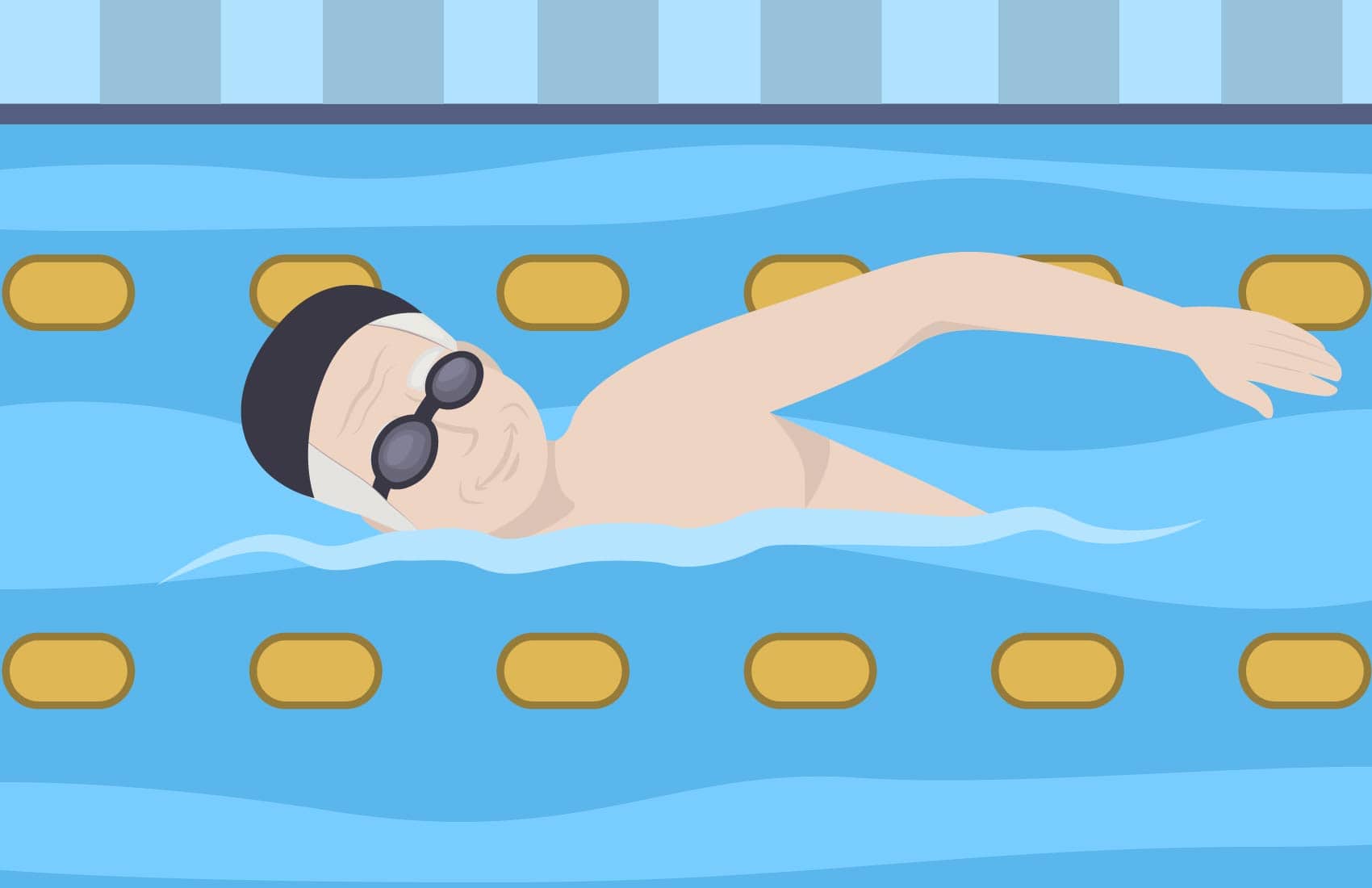
Swimming is suitable for almost anyone, regardless of fitness level or age. One of the reasons why it is great for seniors is that when the body is submerged waist-deep, weight is around 50% of what you feel when on land. If you are submerged neck-deep, the weight you feel is just around 10%. As a senior, this weight difference is really important as it allows more freedom of movement.
Swimming is really gentle on your joints. At the same time, it gives you a really good total-body and cardiovascular workout.
As with any other cardio exercise on this list, make sure that you take it slow. Start with 5 minutes and gradually increase the duration of your swimming sessions. When you feel comfortable in the water, you can always join something like a swim dancing class to make the activity more fun.
5. Dancing
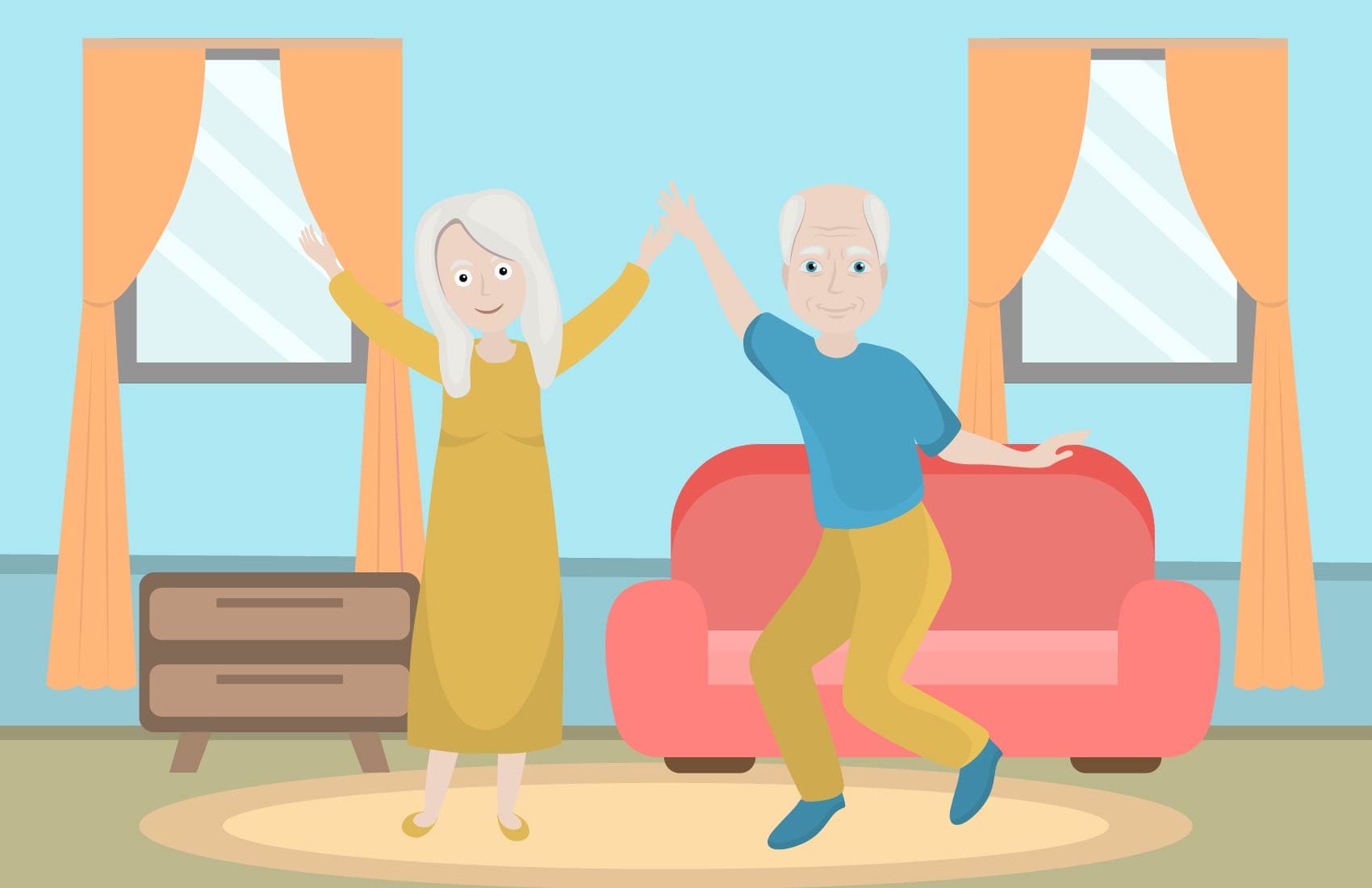
Speaking about dancing, this fun activity is also a wonderful cardio exercise for seniors. Partner dancing is usually preferred among older adults but you can start with almost all dancing styles.
Usually, dancing is categorized as being a low-intensity to moderate-intensity cardio activity. The individual dancing styles, like hip-hop and ballet, are more challenging and can be considered by adults with higher mobility.
If you enjoy dancing, see if there are classes available at local studios or community centers. These offer seniors the possibility to socialize, get out and enjoy a good cardio workout at the same time.
Final Thoughts
Never underestimate the importance of cardio activity as a senior. It can be the difference between living a really happy life and dealing with drastically restricted mobility that stops you from doing what you love.
As you grow older, the body changes. More and more health problems can appear so you need to stay active. Choose the workout routines that are fun for you and that you are comfortable with. Fight back on aging and enjoy your life.








